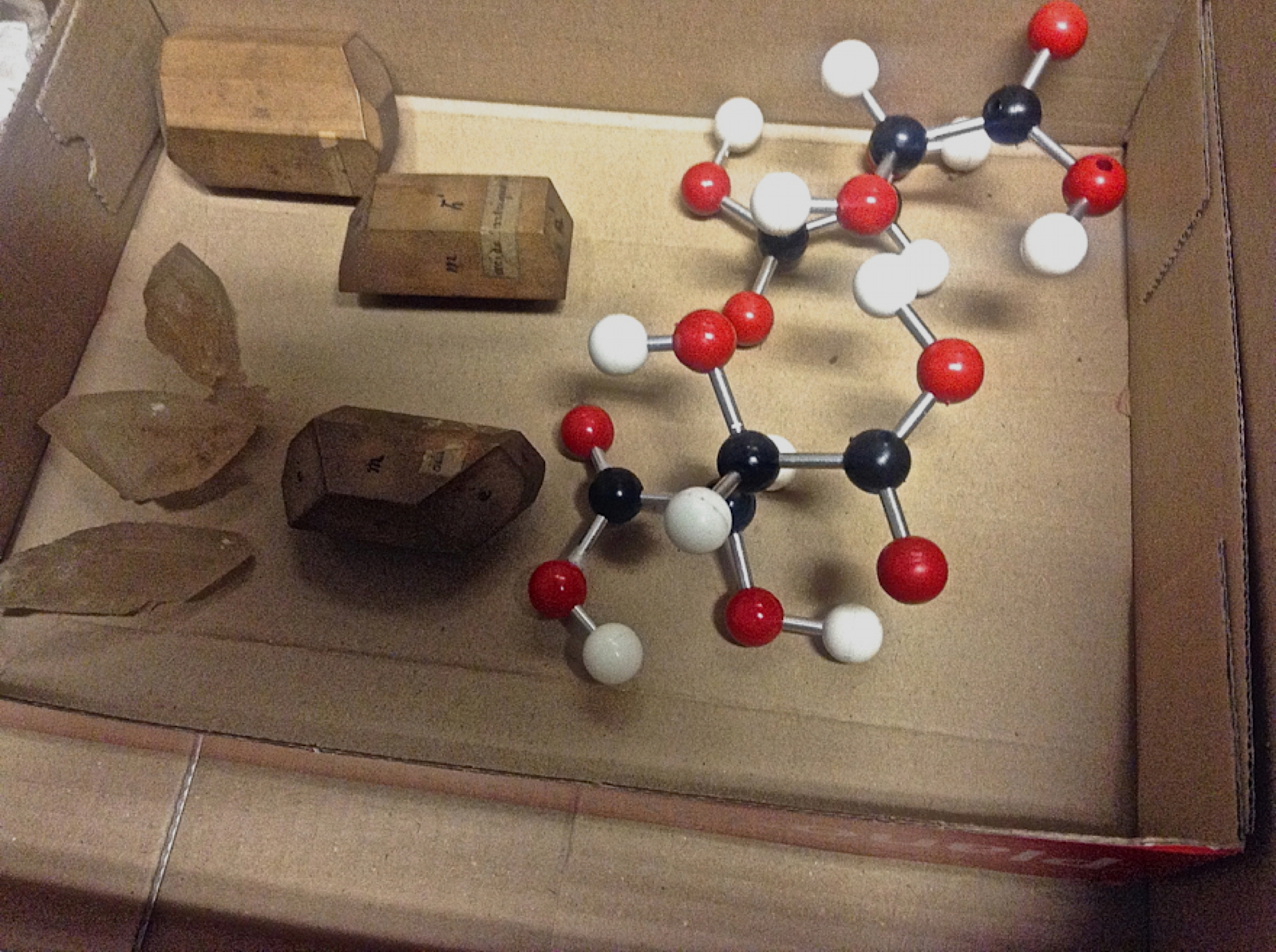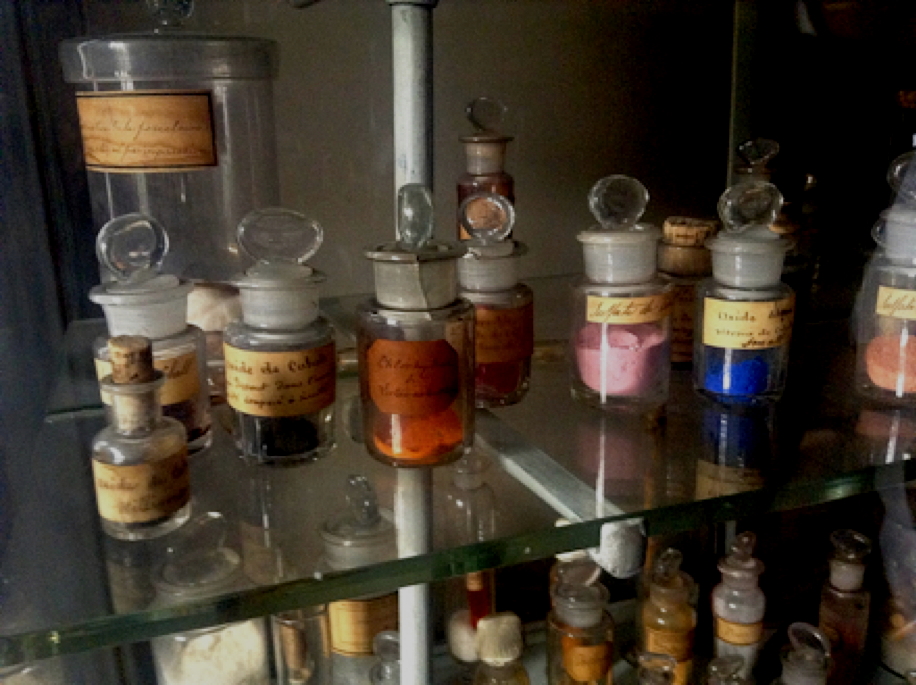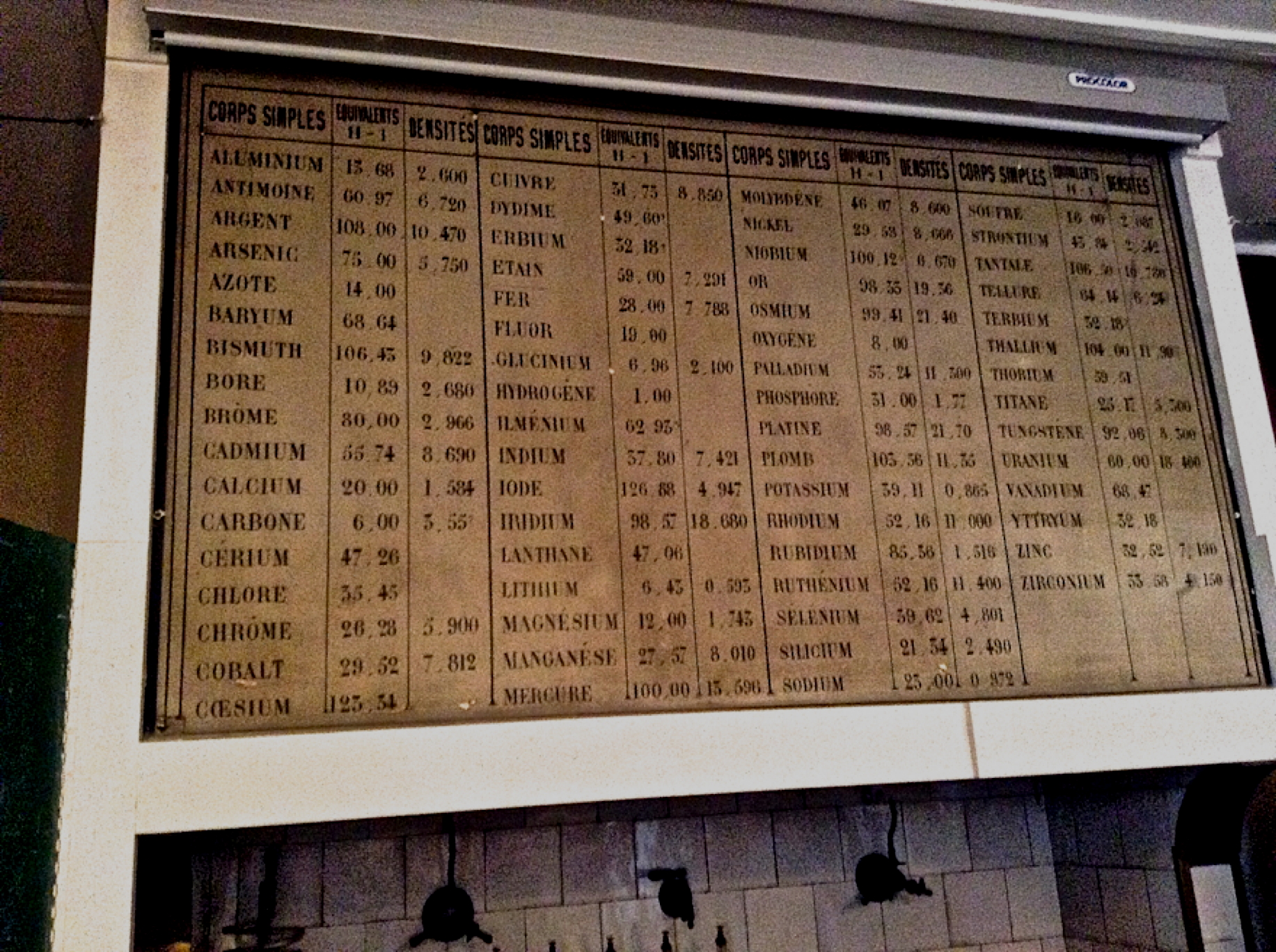Not a computer in sight! I refer to a chemistry lab from the 1800s I was recently taken to, where famous french chemists such as Joseph Gay-Lussac, Michel Chevreul and Edmond Fremy were professors. Although not used for chemistry any more, it is an incredible treasure trove of objects. Here are photos of some.
This photo shows the crystals of (sodium ammonium) tartrate which Pasteur studied in 1848[1]. The crystals on the left are the actual chemical (but not Pasteur’s, although they are thought to be very old), but the wooden blocks in the centre were apparently made for Pasteur to illustrate the morphology.
This last one adorns one end of the lab, and lists the equivalent masses of a collection of known elements. In particular, those for carbon (6) and oxygen (8) were to be corrected in 1855, emerging as atomic weights (relative to hydrogen 1).
It is good to see such heritage preserved. It is even better to emerge from this lab to be confronted by a brand new conference poster; just opposite on the corridor are real working labs, with real students producing posters. I guess, using computers!
References
- H.D. Flack, "Louis Pasteur's discovery of molecular chirality and spontaneous resolution in 1848, together with a complete review of his crystallographic and chemical work", Acta Crystallographica Section A Foundations of Crystallography, vol. 65, pp. 371-389, 2009. http://dx.doi.org/10.1107/S0108767309024088
Tags: Edmond Fremy, Historical, Joseph Gay-Lussac, Michel Chevreul



